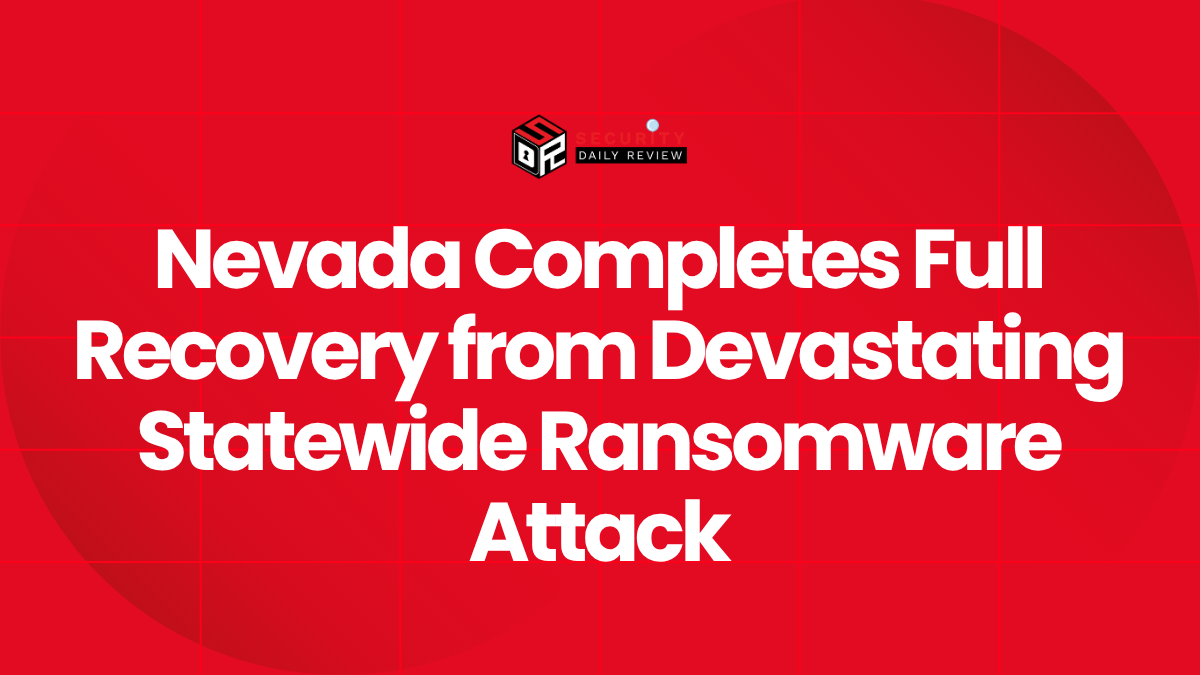A nearly year-long recovery effort following a widespread ransomware incident in August 2023 has come to a close in the state of Nevada. The state government announced that it has restored all affected systems and completed remediation efforts following an attack that disrupted operations across 60 state agencies. The incident paralyzed several core services, including those related to health, public safety, and governmental operations.
A Cohesive Multi-Agency Response to a Coordinated Cyberattack
Onset of the Attack Undermined Statewide Public Services
On August 24, 2023, Nevada’s state IT infrastructure was struck by a well-coordinated ransomware attack. Attackers encrypted critical systems and rendered services inoperable across departments responsible for public health, public safety, and administrative functions.
This incident marked one of the most significant government ransomware attacks in the United States that year. Disruptions included delay or denial of citizen services, suspension of platforms handling medical and criminal records, and limited communications across agencies. Despite the scale of the intrusion, officials reported that no ransom was paid and that the state adhered to a containment, isolation, and recovery protocol.
Engagement of Incident Response and Remediation Teams Was Immediate
Nevada’s Office of Information Security (OIS) activated emergency cybersecurity procedures immediately upon identifying the compromise. Specialists focused on incident containment, forensic analysis, and establishing business continuity across affected sectors, many of which provide life-critical services.
Key milestones in the state’s recovery process included:
- Complete disconnection of infected systems to prevent lateral movement
- Deployment of endpoint detection and response (EDR) tools across all endpoints
- Restoration of secure backups from clean images
- Implementation of network segmentation to limit future blast radius
- Strengthening identity and access management to reduce attack surface
Collaboration with federal partners including the Cybersecurity and Infrastructure Security Agency (CISA) and the Federal Bureau of Investigation (FBI) further enabled a broad analysis of threat indicators and intelligence sharing across jurisdictions.
Strengthening Systems to Prevent Recurrence
Post-Attack Investment Focused on Zero Trust and Cloud Security
Nevada’s recovery plan went beyond simple data restoration. According to officials, the state used the opportunity to modernize its cybersecurity architecture to align with a Zero Trust framework. This approach minimizes implicit trust in users and devices across enterprise environments.
Critical elements added or improved during recovery include:
- Multi-factor authentication (MFA) mandates for all internal logins
- Centralized Security Information and Event Management (SIEM) tools
- Cloud-based continuity and disaster recovery configurations
- Enhanced logging and data retention policies
The adoption of these technologies aims not only to harden the network perimeter but also to surveil the network for threats in real-time, facilitating earlier detection.
Workforce Training and Public Communication Were Key to Recovery
Nevada’s recovery strategy was notable for its emphasis on user education and external communication. Following the attack, the Office of Information Security launched a state-wide employee training program focused on ransomware awareness, phishing detection, and best practices for credential hygiene.
Additionally, regular public updates helped maintain transparency and trust, especially as critical services like emergency communications and health data platforms were restored in phases.
“We recognized early that recovering alone was not enough,” said a state cybersecurity official. “We had to implement foundational reforms so Nevada comes out stronger, more resilient, and more secure.”
Government Cybersecurity Faces Increasing Threat Landscape
Ransomware Remains a Top Threat to State and Local Governments
The Nevada ransomware recovery comes amid growing threats to public sector infrastructure. State and local governments are increasingly targeted by ransomware groups seeking to disrupt essential services or extort significant payouts. Critical services – including emergency response, water management, and healthcare infrastructure – are often inadequately resourced in terms of cybersecurity staffing and defenses.
The Nevada incident underscores the importance of establishing:
- Coordinated incident response plans
- Redundant and secure backup strategies
- Cross-agency visibility using logging and alerting systems
- Routine penetration testing and red-teaming
States and municipalities are increasingly adopting shared service cybersecurity models to streamline defenses and reduce duplication of effort.
Final Assessment Shows System Restoration and Architecture Hardening
Nevada Reports Full Operational Recovery Across 60 Agencies
As of May 2024, Nevada officials confirm all 60 impacted agencies have resumed full operations. System integrity and service continuity have been verified across departments through rigorous testing. In some sectors, such as health and safety, redundant systems and cloud mirroring have been established to ensure uninterrupted functionality in the event of future disruptions.
The state’s ransomware recovery strategy now stands as a case study in prompt deployment of incident response protocols, investment in long-term resilience, and a zero-ransom approach.
As ransomware actors continue to target vital infrastructure, Nevada’s experience may offer valuable lessons for other states seeking to shore up their government cybersecurity and enhance ransomware recovery capabilities.









